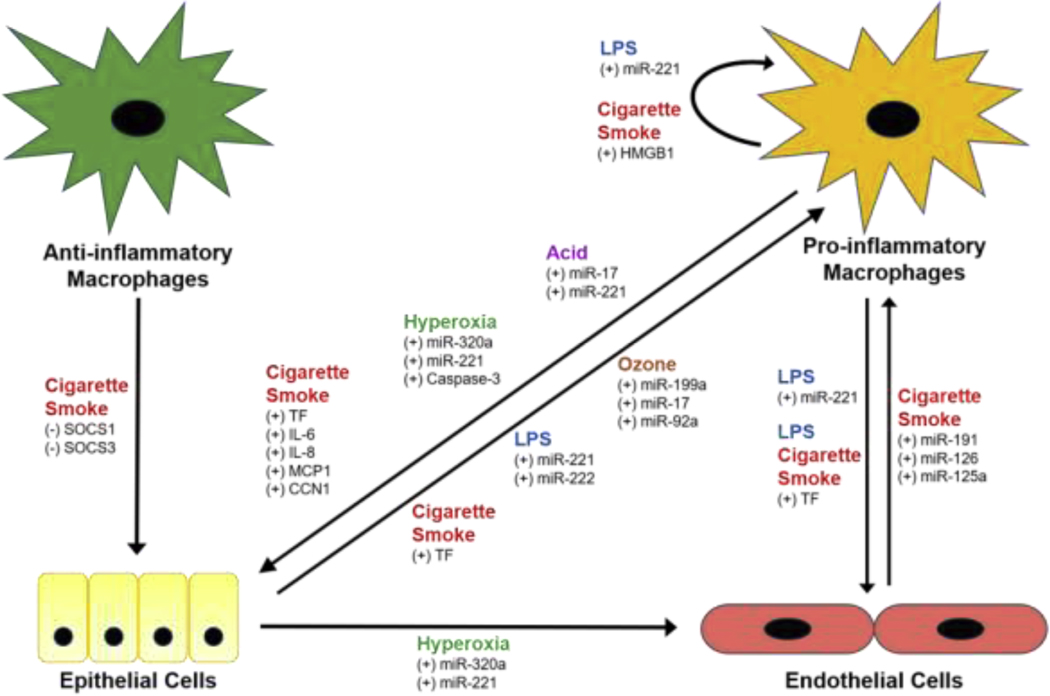Figure 1.
Cell-cell communication between lung cell types in response to pulmonary toxicants. Exposure to cigarette smoke, ozone, hyperoxia, acid, and LPS stimulates (+) or inhibits (−) the release of extracellular vesicles (EVs) from anti-inflammatory and pro-inflammatory macrophages, epithelial cells, and endothelial cells in the lung. The EVs transport cargo (e.g., proteins, miRNAs) to recipient cells thereby influencing their function through uni- and bidirectional paracrine and autocrine signaling mechanisms.

